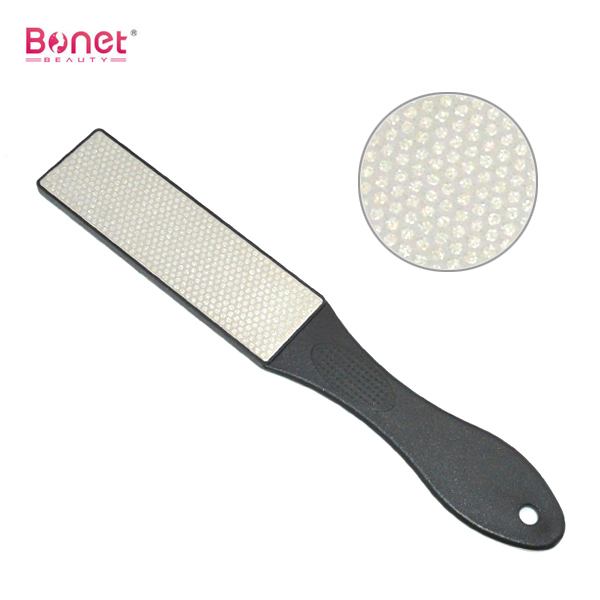Time-resolved fluorescence immune TrFIA analysis (T3 and T4 detection in serum as an example)
Time resolved fluorescence immunoassay (Time resolved luoro-immunoassay, TrFIA) technology appeared in the early 1980s, is a new type of ultra-trace substance immunoassay method developed on the basis of immunofluorescence analysis. TrFIA uses lanthanide rare earth elements to label antibodies, and uses the difference in fluorescence lifetime of fluorescent emitters to separate fluorescence with the same wavelength to eliminate the interference of non-specific fluorescence in the sample, thereby maximizing the sensitivity of the analytical method. The method is comparable to radioimmunoassay (RIA) in terms of sensitivity, specificity, stability and measurement automation. The minimum detection value can reach 10-8mol / L, and there is no radioactive contamination.
ã€Fundamental】
Lanthanide rare-earth elements europium (Eu3 +), samarium (Sm3 +), etc. are easily labeled with conjugated double bonds with antibody molecules through chelating agents with a dual-functional group. When the labeled antibody and antigen are combined, the rare earth element chelate will not only emit high-intensity fluorescence (613nm) under the excitation of ultraviolet light (340nm), but also have a long decay time (10ms-1ms). The decay time of protein fluorescence and non-specific fluorescence of other compounds is generally 1ns-10ns, and the longest does not exceed 20ns. By delaying the measurement time, after the non-specific, short-lived fluorescence in the sample has decayed, and then the specific fluorescence of the rare earth element chelate is measured, the interference of the non-specific local fluorescence can be completely eliminated.
ã€Reagents and materials】
(1) Analysis buffer: 0.1mol / L, pH7.5 Tris-HCl buffer, which contains 0.3mol / L sodium trichloroacetate, 0.1% BSA, 0.02% NaN3;
(2) Washing solution: physiological saline, containing 0.1% Tween-20;
(3) Fluorescence enhancement solution: b-naphthoyl trifluoroacetone 6mg, trioctyl phosphine oxide 19.33g, hydrogen phthalate 1.3g, glacial acetic acid 6ml, Tween-20 0.2ml, plus three steam Water to 500ml, then add 1ml of Triton-100, place in 37 ℃ water bath to dissolve, add three distilled water to 1000ml, save in plastic bottle for future use.
(4) T3 and T4 standards;
(5) LKB ARCUS-1230 time-resolved fluorometer (Pharmacia);
(6) Eu3 + marked Tg (Eu-Tg): see the notes for the marking method;
(7) 0.1mol / L, pH9.6 carbonate buffer
[Operation method]
(1) Dilute the T3 and T4 antibodies to 10 mg / ml with 0.1 mol / L carbonate buffer pH 9.6, add to the wells of a 12-well polystyrene titration bar, 100 ml per well, and place at room temperature for 20 h;
(2) Throw away the coating liquid and wash 3 times with washing liquid;
(3) Add T3 and T4 standards and serum to be tested at different dilutions, 20ml per well;
(4) Quickly add 100ml of Eu-Tg diluted with analysis solution, mix well on the microplate shaker;
(5) Room temperature 2h, washing solution 10 times;
(6) Add 100ml of fluorescence enhancement solution to each well, and shake it slowly for 5min, then stand still at room temperature for 30min;
(7) Use LKB ARCUS-1230 time-resolved fluorometer to measure the fluorescence intensity.
ã€Result analysis】
The standard curves of T3 and T4 with different dilutions are used as the abscissa, and the corresponding fluorescence intensity is used as the ordinate to draw the standard curve. From the standard curve, the corresponding content of T3 and T4 in the sample to be tested can be determined reliably.
[Note] Tg's Eu3 + marking technology
â‘ Dissolve 1mgTg and 1mgcDTPA in 0.5mol / L carbonate buffer pH8.2 and react at room temperature for 10min;
â‘¡Adjust to pH9.0 with 1mol / L NaHCO3;
â‘¢ Precipitation with saturated ammonium sulfate;
â‘£ Precipitate with 0.5ml 1.2mmol / L EuCl3 solution (0.1mol / L, pH6.0 citrate buffer solution) for 40min;
⑤ Separated by Sephadex G-50 column chromatography to obtain Eu-Tg.
-
It is a Foot File scraper which is used to remove callus dead skin cells on foot soles.
-
Dual sided design, one side is stainless steel mesh, and the other side is sandpaper.
-
Can brush different parts of human body to dispel old skin, black skin, thick skin, hard skin, make the skin soft and tender, and also get the massage health care function.
-
Use comfortable and good resistance.

Plastic Handle Foot File
Plastic Handle Foot File,Plastic Foot File,Professional Foot File,Long Plastic Handle Foot
Bonet Houseware Co., Ltd. , https://www.manicureset.de
